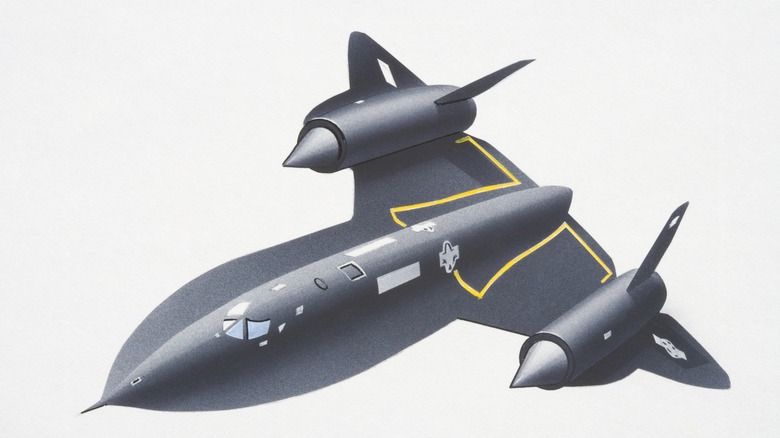Everyone Knows The SR-71 Blackbird Is Fast, But How Slow Can It Fly?
One of aviation's most fascinating tales involves the SR-71 Blackbird. It comes from U.S. Air Force Maj. Brian Shul, who piloted the aircraft renowned for its speed and altitude capabilities. However, while this story is about its extreme performance, it's not about quickness. Rather, this is an unexpected display of slow and low flight. The outcome was a breathtaking spectacle, making it one of the most remarkable moments in aviation history.
Shul, flying the SR-71 Blackbird from RAF Mildenhall, England, with co-pilot Walt Watson, received an unexpected request for a fly-past over a small RAF base in England to inspire young cadets. Racing across Denmark and refueling over the North Sea, they located the airfield through immense haze and a WWII-era tower obscured by trees. Maneuvering to the field at subsonic speeds, the pair struggled to spot it through the fog, causing concern as their airspeed indicator dipped below 160 knots (approximately 184 mph).
"Just at the moment that both afterburners lit with a thunderous roar of flame (and what a joyous feeling that was) the aircraft fell into full view of the shocked observers on the tower," Shul reportedly said.
Though they pulled off the stunt, Shul and Watson agreed never to repeat such a feat.
This jet wasn't made for slow speeds
During the Vietnam War, Brian Shul served as a fighter pilot and reached the rank of major in the U.S. Air Force. He performed 212 combat missions before being shot down near the Cambodian border in 1973. This incident left him with severe burns and a slim chance of survival. Remarkably, he defied expectations and recovered. Rather than retire, Shul returned to active flight duty, and during that time, he piloted the legendary SR-71 Blackbird.
Developed by Lockheed Corporation during the Cold War era, the SR-71 Blackbird revolutionized long-range reconnaissance with its unparalleled altitude performance and speed. This aircraft holds enduring records for horizontal flight altitude and non-rocket-powered speed — achievements that have gone unmatched in modern aviation. Equipped with state-of-the-art cameras and advanced sensors, the SR-71 operated with impunity in hostile territories. Across its two-plus decade tenure, the SR-71 was the world's quickest, most altitudinous plane. But the low and slow speed achieved by Shul was certainly not intended by Lockheed's engineering team when it built the Blackbird.

